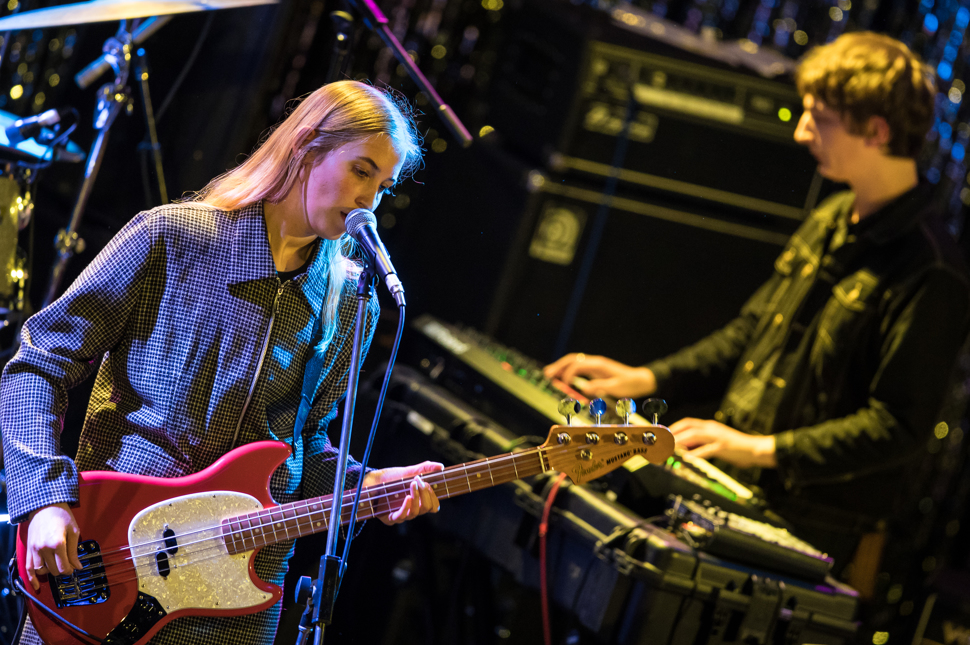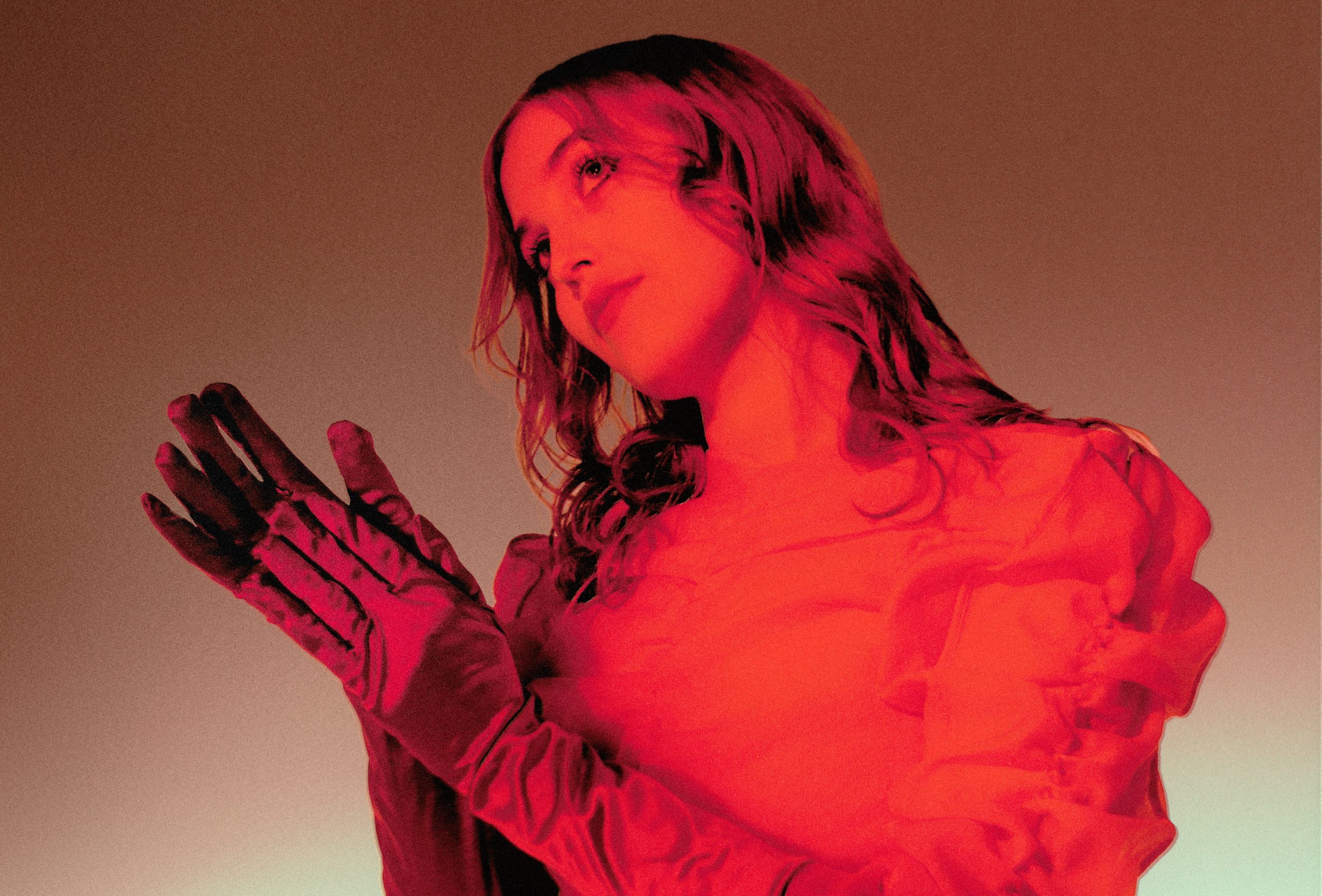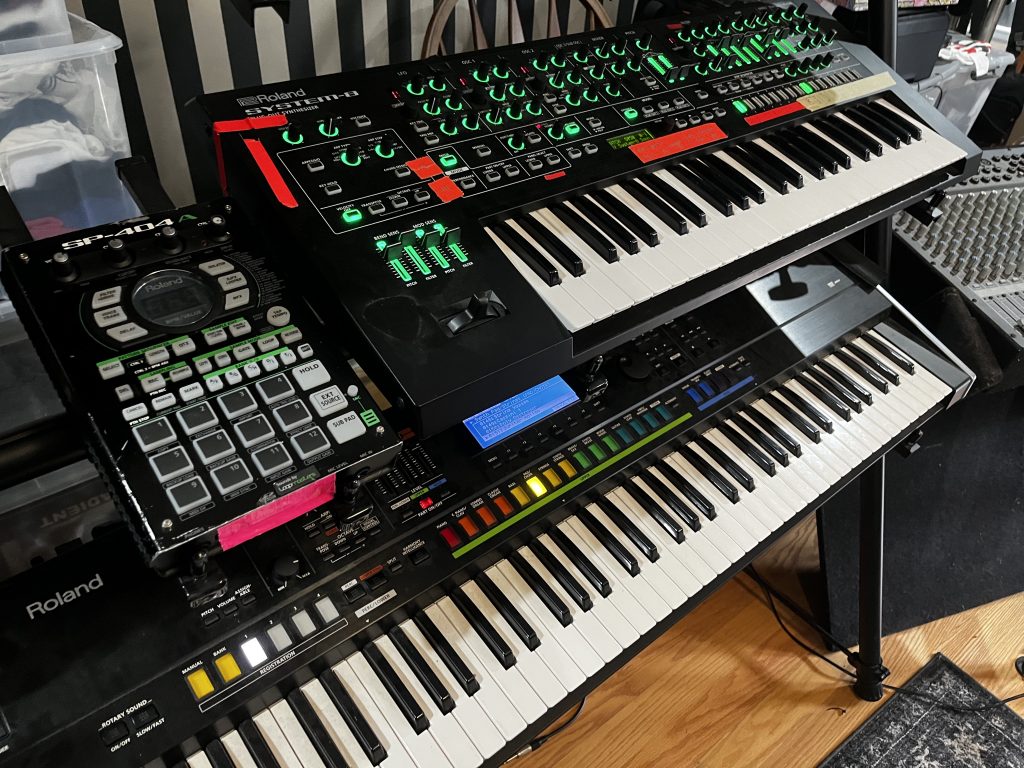While names like Ride, Slowdive, and My Bloody Valentine remain linked to late ’80s/early ’90 shoegaze, Hatchie proves there’s plenty of juice left in the dream-pop canon. On albums such as Keepsake and Giving the World Away, Harriette Pilbeam and synth wizard husband Joe Agius successfully join the dots between the Cocteau Twins’ lush, textured sound and the chart-friendly pop of fellow Aussie Kylie Minogue. The duo extended their working relationship with Grammy-nominated producer Jorge Elbrecht. “Nosedive” moves towards a punchier, more aggressive sound. Despite the step-change, Roland remains the common denominator in Hatchie’s production armory.
No Time to Waste
“I’m capable of writing more than nice dream-pop songs,” explained Harriette Pilbeam in 2022. This prophetic statement came as Hatchie was already working on material before the release of Giving the World Away.
Although they completed mixing at the end of 2020, the pandemic forced the duo to sit on the record for two years. “Obviously, that’s a long time to be waiting around, so we started working on new music,” the artist reveals. “And we finally got to work in person with Jorge Elbrecht on a bunch of tracks in November 2021, including ‘Nosedive.'”
One Night in Denver
According to Harriette, the inspiration for “Nosedive” came unexpectedly. “Although Jorge is more of a night owl than we are, we’d been working on music all day. One night, we decided to go to a couple of goth clubs in his homeland Denver.”
Husband Joe Agius takes up the story. “The club was playing a lot of industrial, new wave, and dance-oriented stuff. We were jumping in and out of rooms all night and hearing many things we hadn’t heard before,” he recalls. “The next day, we decided to lean towards that sound. ‘Nosedive’ came from that.”
“It’s probably our only song we’re ever going to see a mosh pit to. We’ve written a lot of nice, pretty songs but wanted to flip all that on its head with ‘Nosedive’ and make something that would stand out and bring energy to our live sets.”
"We've written a lot of nice, pretty songs but wanted to flip all that on its head."
Harriette Pilbeam
The Jorge Elbrecht Effect
Producer Jorge Elbrecht—who mixed Japanese Breakfast’s Grammy-nominated Jubilee—was also influential in the creation. “The three of us were in a room writing ‘Nosedive’ together. You can hear his influence because he writes a lot of cool and interesting ’80s melodies,” Harriette recalls. “Once we got going, we ended up with a full song pretty quickly.”
Joe elucidates how the trio combined to create the track. “We went through drum samples to find something industrial-sounding— dirty and distorted,” he says. “The arpeggiated synth that opens the track comes from a random synth lead we made on the Roland SYSTEM-8.” He goes on to explain the sound’s genesis. “Adding tremolo to the pattern made it almost feel like a sequencer. We put the rhythm track down and started building, but layer-wise it’s probably one of our thinner songs. We often layer a million synths on each other, but ‘Nosedive’ was slightly more restrained.”

“What I like about our process is that we tend to pass the instruments around, which makes it hard to remember who played what,” Joe says. “For ‘Nosedive,’ Harriette mainly wrote the vocal while Jorge and I played guitar. I’ve always been a fan of tremolo guitar feedback, so we added a bit of pedal distortion to the track but not as much as when we record all the shoegaze stuff.”
"We'll often layer a million synths on each other, but 'Nosedive' was a bit more restrained."
Joe Agius
A Chorus without Words
Amidst razor-sharp guitars and aggressive chugging bass, Harriette’s vocals float like a cool wind. In another twist, the addictive chorus is wordless. “We wanted to do something different with ‘Nosedive’ and experiment with an anti-chorus that was as hooky as something with lyrics.” This is an approach the artist had wanted to attempt for a while. “I’ve always been interested in using my voice as more of an instrument, and this song felt like the perfect opportunity to explore that.”

She walks through the meaning behind the lyrics. “The verse is from the perspective of having the devil on your shoulder. He’s telling you no matter how much you try to trust fate, you’re not always going to get what you want,” Harriette says. “I wanted to express that feeling of powerlessness. Sometimes you have to dive headfirst into things even if they don’t seem like a good idea.”
"I wanted to express that feeling of powerlessness. Sometimes you have to dive headfirst into things even if they don't seem like a good idea."
Harriette Pilbeam
They recorded the vocals at an Airbnb in Hamburg. “It was very DIY,” Joe says. “We knew we had to finish the song during our last tour, so we set up a tent by putting a duvet over two chairs and creating our little sound booth. We always carry an SM7B microphone, so we plugged that into a little interface and gave it our best shot.”
Roland Roundup
Joe Agius on Roland gear Hatchie uses live and in the studio.
JUPITER-50
“We used the Roland JUPITER-50 a lot when we recorded the last album and for a few little things on ‘Nosedive.’ It’s a digital workstation but has the same colored buttons as the old JUPITERs, and Roland SuperNATURAL presets. Whenever a song doesn’t feel catchy enough, I know it will need some JUPITER-50. I’ve used it on every song I’ve ever released because the synth pads are really beautiful. I’ve had it for almost a decade and still haven’t gone through every sound on there—it seems endless.”
"Whenever a song doesn't feel catchy enough, I know it's going to need some JUPITER-50."
Joe Agius

SYSTEM-8
“I love the SYSTEM-8 because you can add all those odd synths that I can’t afford to buy and create a bunch of random noise hits. If you’re looking to own a JUNO, JX-3P, or a JUPITER, then it’s the most efficient and affordable way to bring those synths on the road. It’s got a condition knob you can turn up and down depending on how old-sounding you want its synth recreations to be. Half the reason people love old synths is that the parts are getting old. That’s what gives them their unique character.”
SP-404A
“We use the SP-404A live and tour with it everywhere. It’s great for launching one-shot samples from all the different synths we can’t bring on tour with us. I’ve seen people make really cool music on it too. That’s something we’re now thinking about trying to do but haven’t quite got round to yet.”







